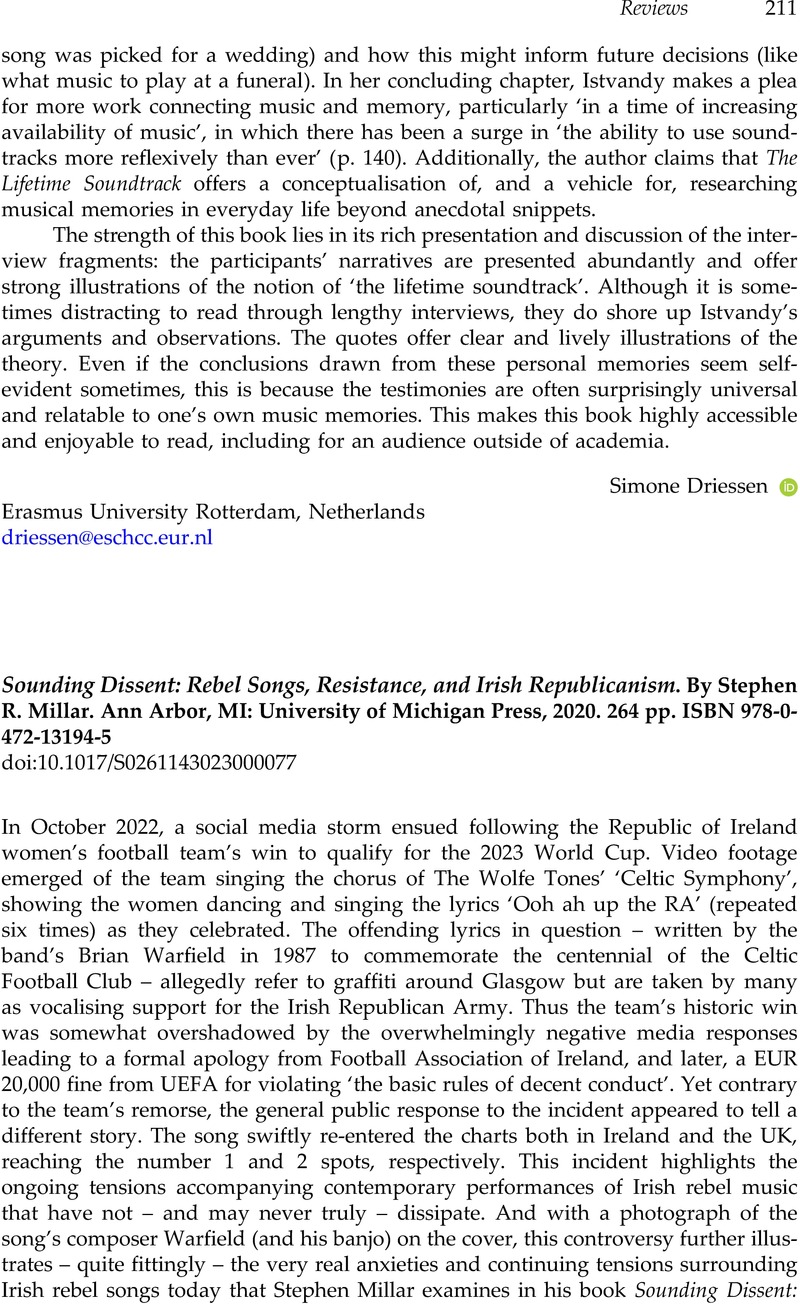No CrossRef data available.
Article contents
Sounding Dissent: Rebel Songs, Resistance, and Irish Republicanism. By Stephen R. Millar. Ann Arbor, MI: University of Michigan Press, 2020. 264 pp. ISBN 978-0-472-13194-5
Review products
Sounding Dissent: Rebel Songs, Resistance, and Irish Republicanism. By Stephen R. Millar. Ann Arbor, MI: University of Michigan Press, 2020. 264 pp. ISBN 978-0-472-13194-5
Published online by Cambridge University Press: 15 March 2023
Abstract
An abstract is not available for this content so a preview has been provided. Please use the Get access link above for information on how to access this content.

- Type
- Review
- Information
- Copyright
- Copyright © The Author(s), 2023. Published by Cambridge University Press
References
Bonnette-Bailey, L.M. and Belk, A. G. Jr (eds). 2022. For the Culture: Hip-Hop and the Fight for Social Justice (University of Michigan Press)CrossRefGoogle Scholar
Cusick, S. 2008. ‘“You Are in a Place that is Out of the World …”: music in the detention camps of the “Global War on Terror”’, Journal of the Society for American Music, 2/1, pp. 1–26CrossRefGoogle Scholar
MacLachlan, H. 2020. Singing Out: GALA Choruses and Social Change (University of Michigan Press)CrossRefGoogle Scholar
Rogers, J. C. 2021. Resonant Recoveries: French Music and Trauma Between the World Wars (Oxford University Press)CrossRefGoogle Scholar
Stainova, Y. 2021. Sonorous Worlds: Musical Enchantment in Venezuela (University of Michigan Press)CrossRefGoogle Scholar



